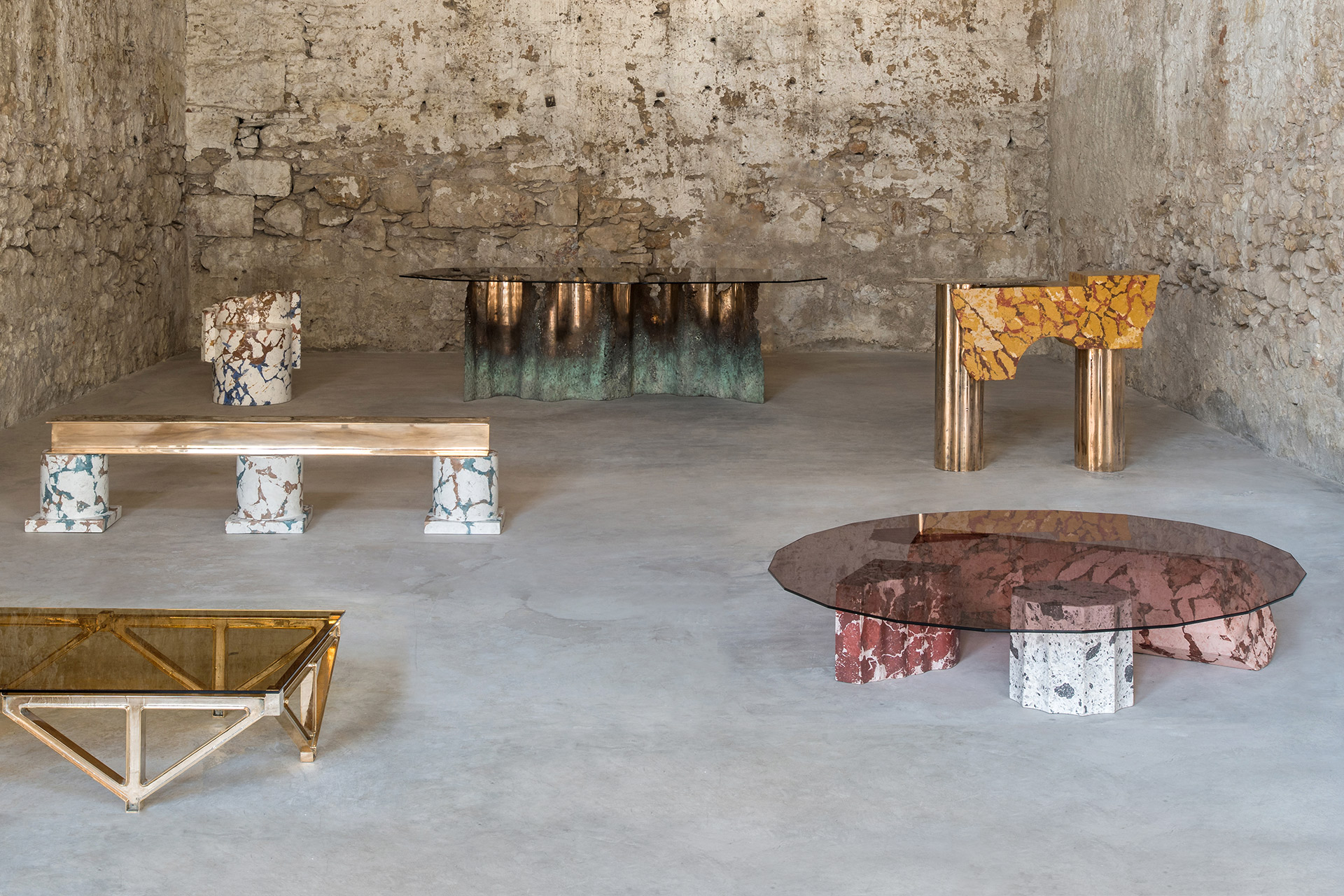

Ruins features a series of works that re-signify architectural fragments belonging to industrial and classical archaeology of the Mediterranean basin.
The project relates some architectural elements of the classical era such as columns, capitals, sections of amphitheater with rudiments of the industrial era, such as the double-T beams, reticular structural elements and corrugated sheet metal, which are overlapped and reshaped according to a new perspective.
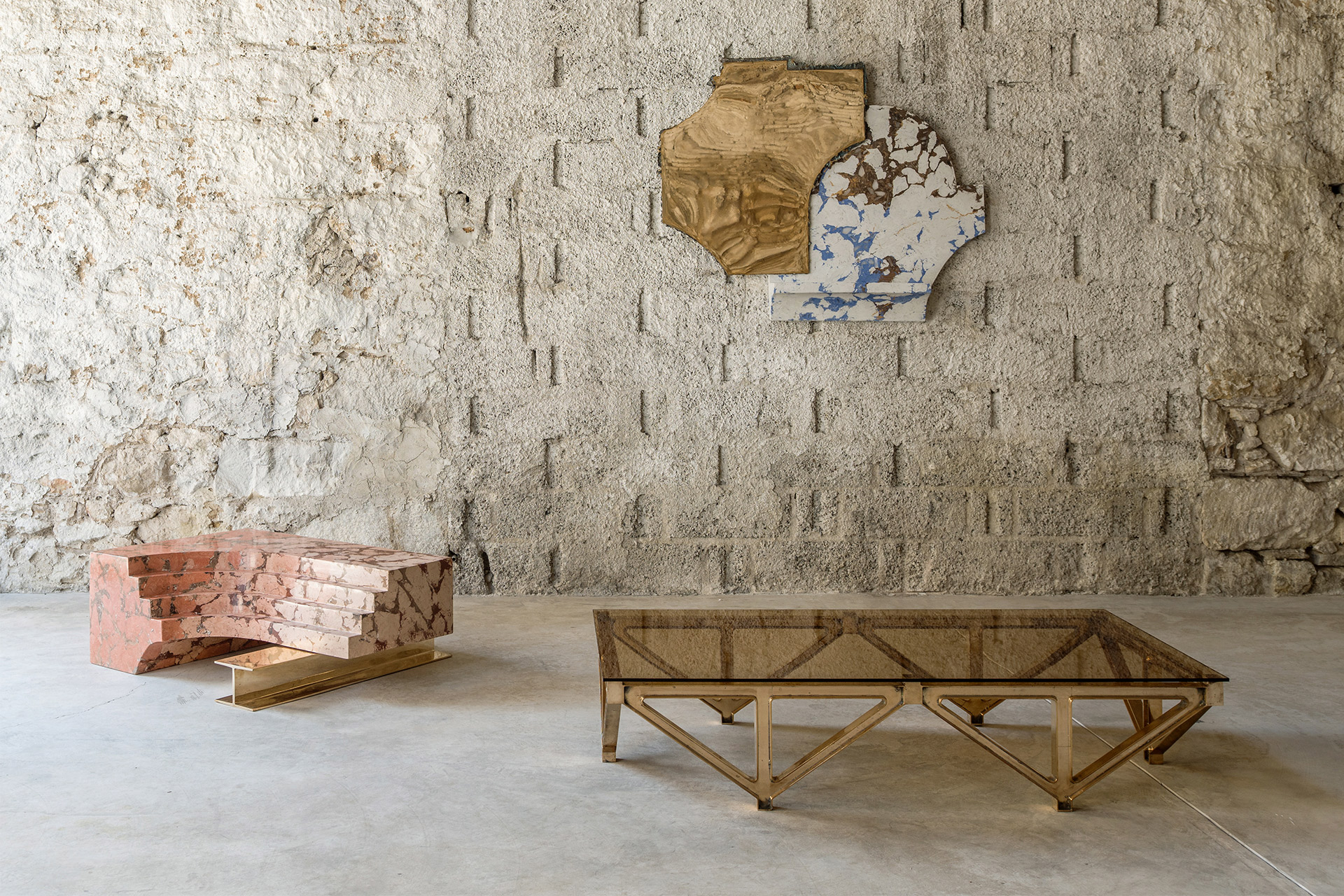
According to this concept, the elements belonging to industrial archaeology are transposed into bronze sculptures through the technique of lost wax casting and then mirror-polished to communicate a sense of indefinite time that becomes hypothetical, evanescent, suspended.
The elements that refer to the classical era are made in Marmo di Rima a nineteenth-century decorative technique created in Rima (Italy) a tiny mountain village placed in the Alps.
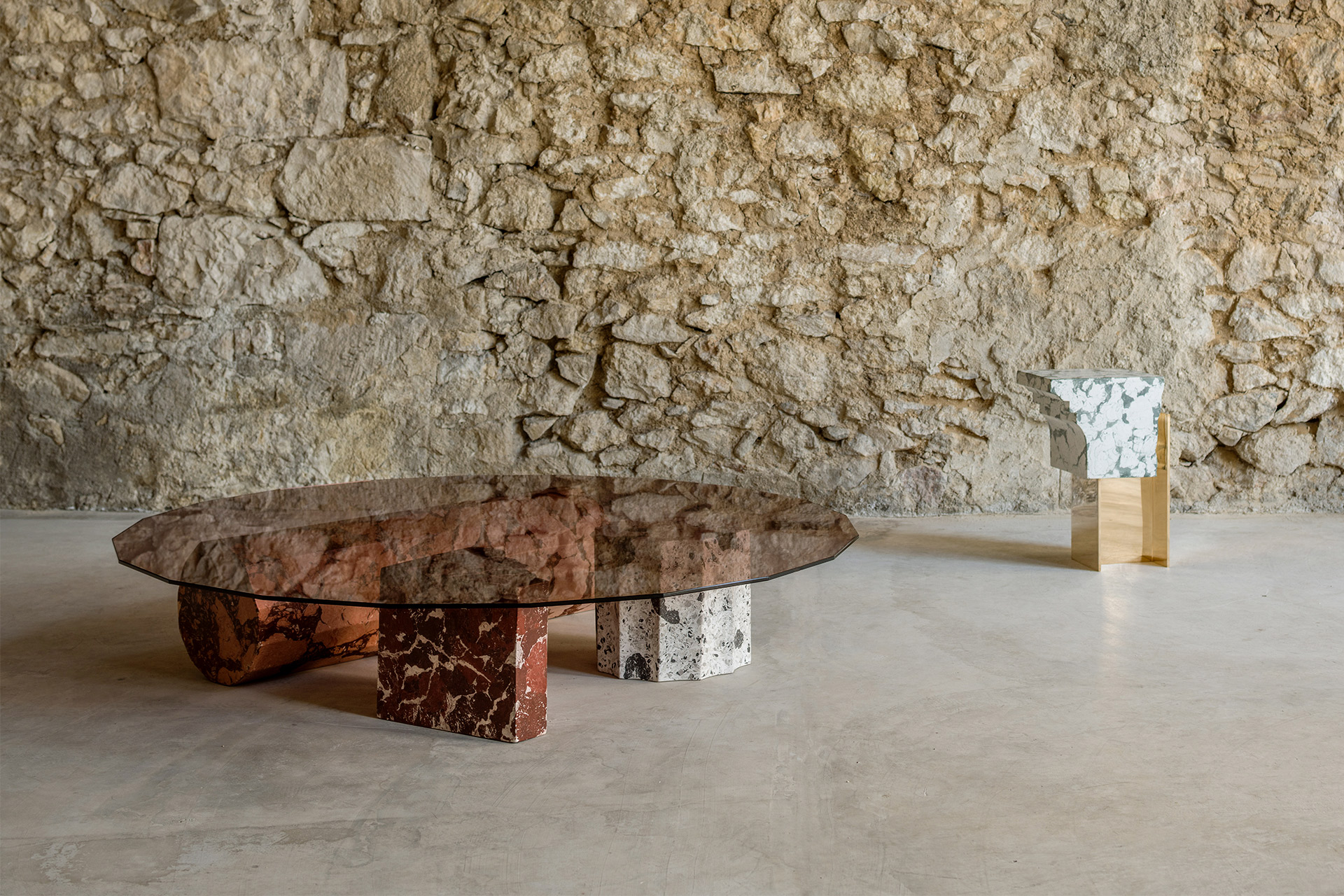
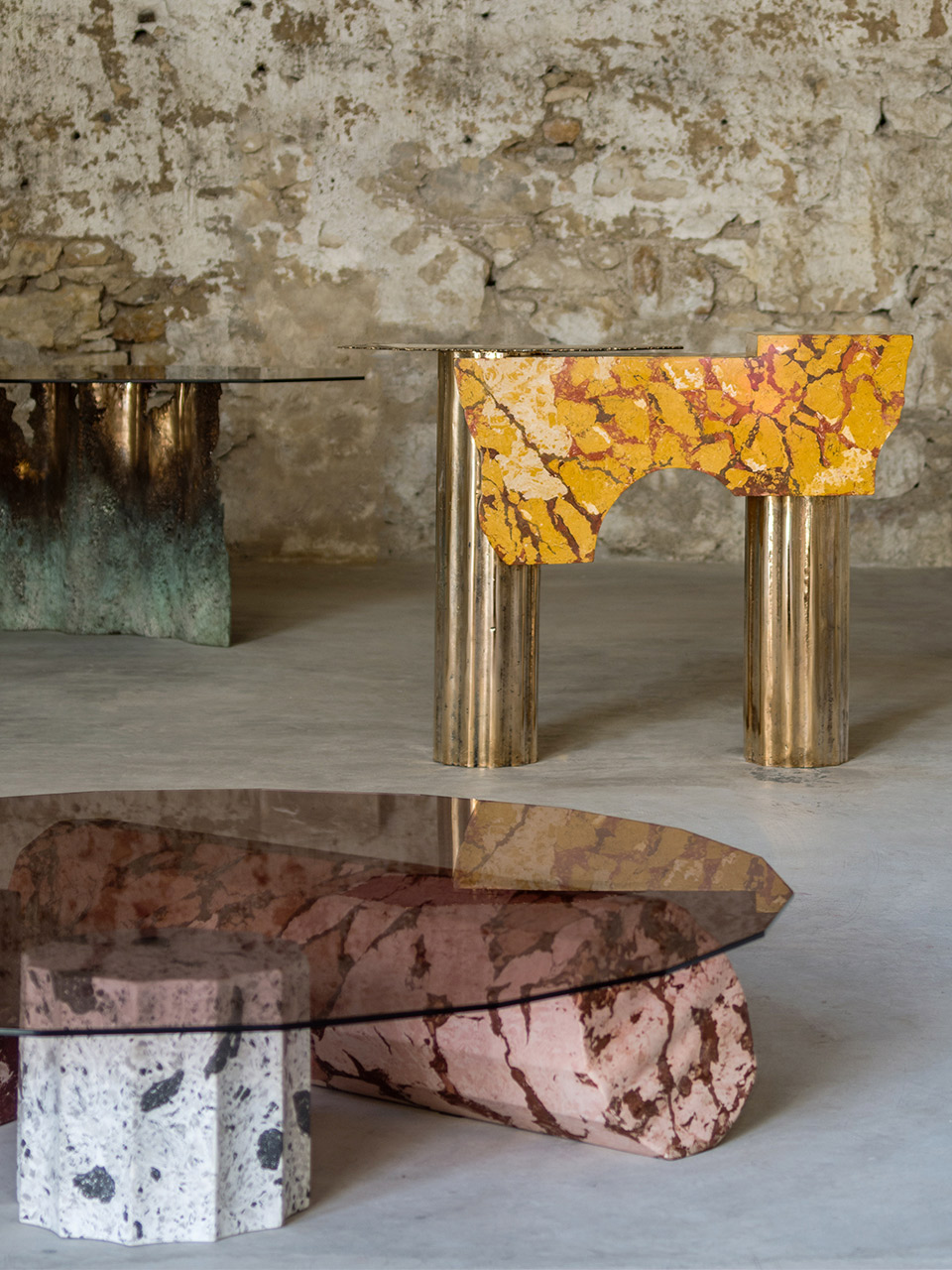
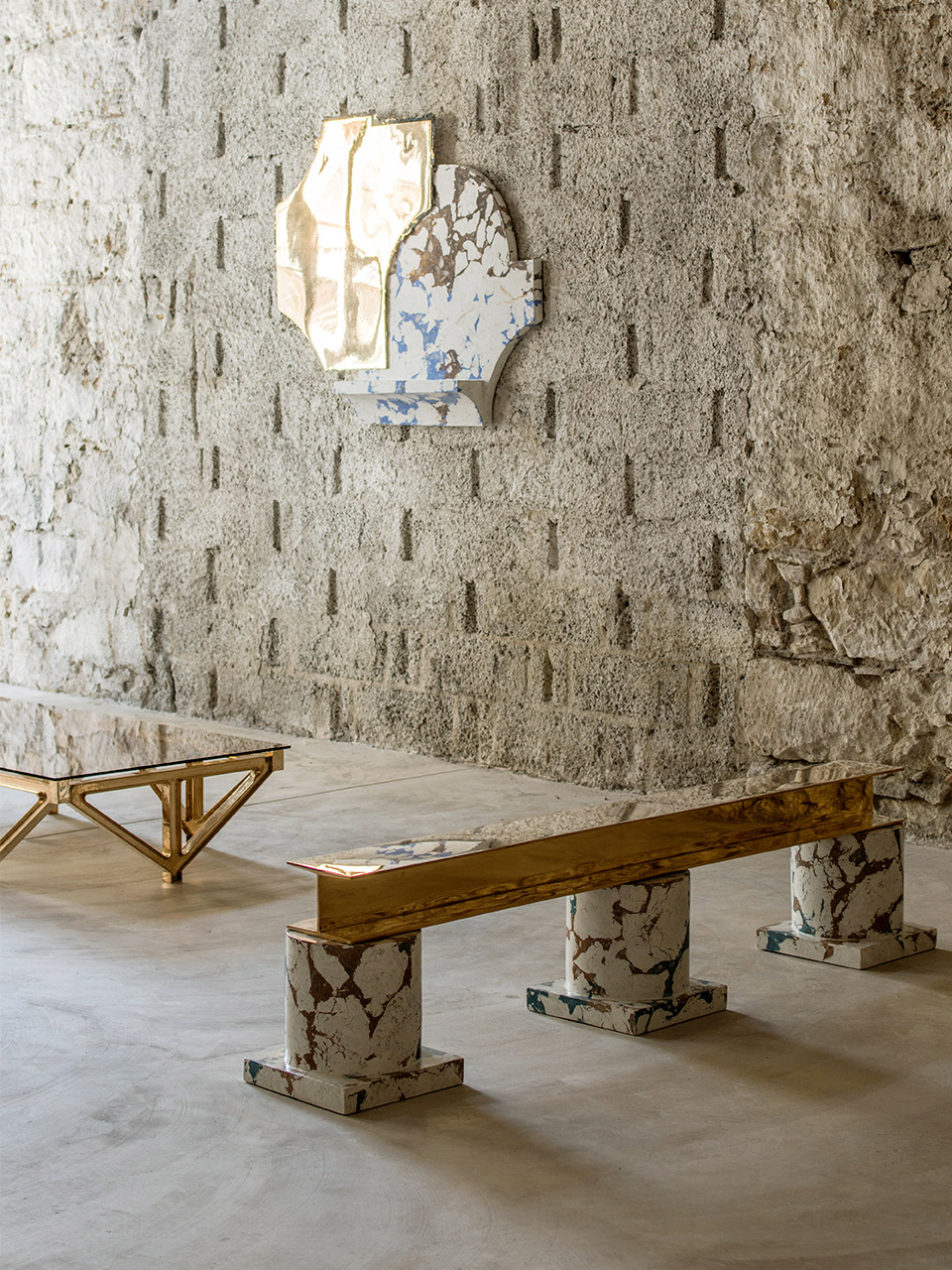
Marmo di Rima has been used in the project to reproduce and reinterpret a series of extinct natural marbles, which was found in the various archaeological sites visited, including Baalbek in Lebanon, Volubilis in Morocco, Delphi, Olympia, Athens in Greece, Valle dei Templi in Sicily and Archaeological Parks of Rome, just to name a few.
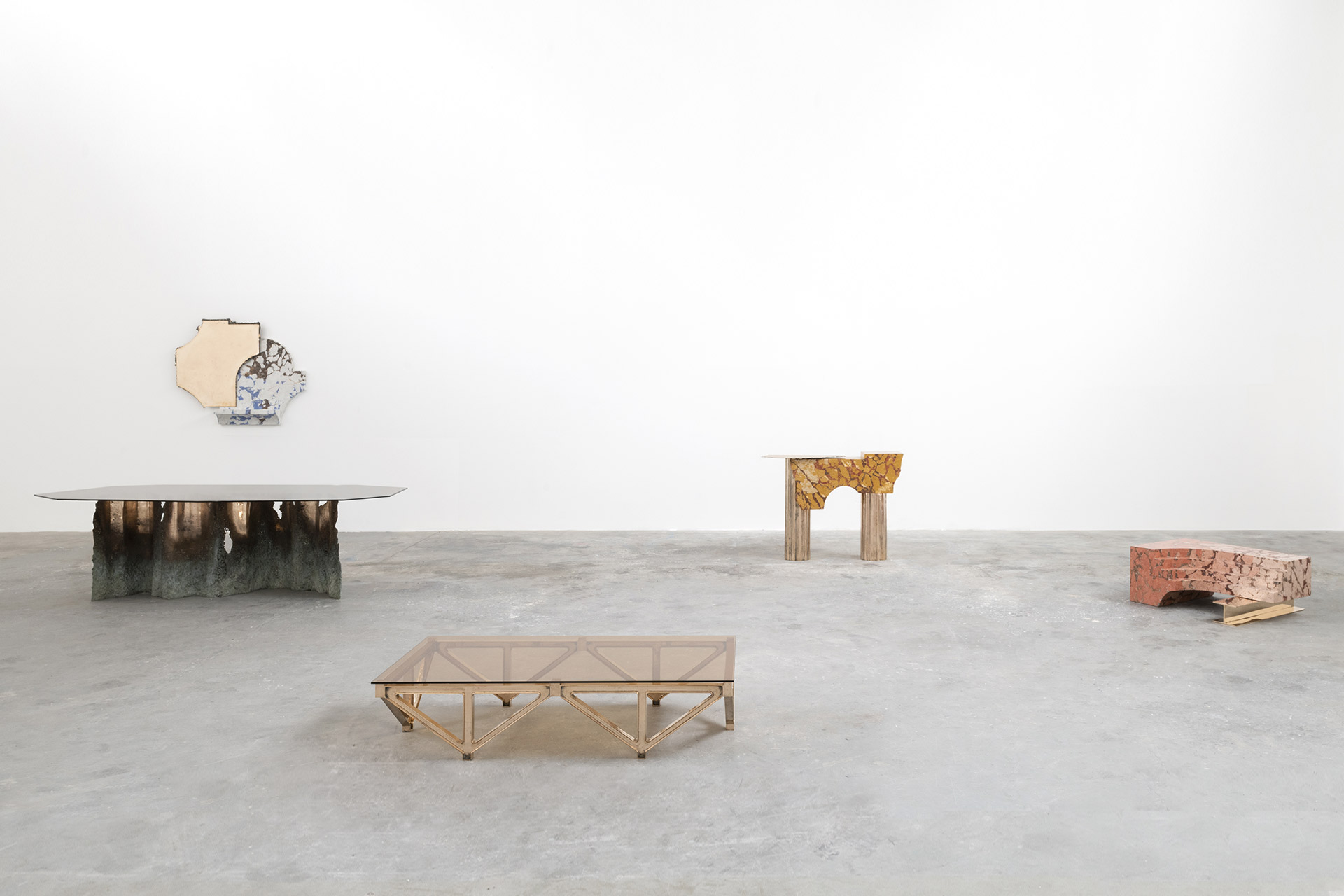
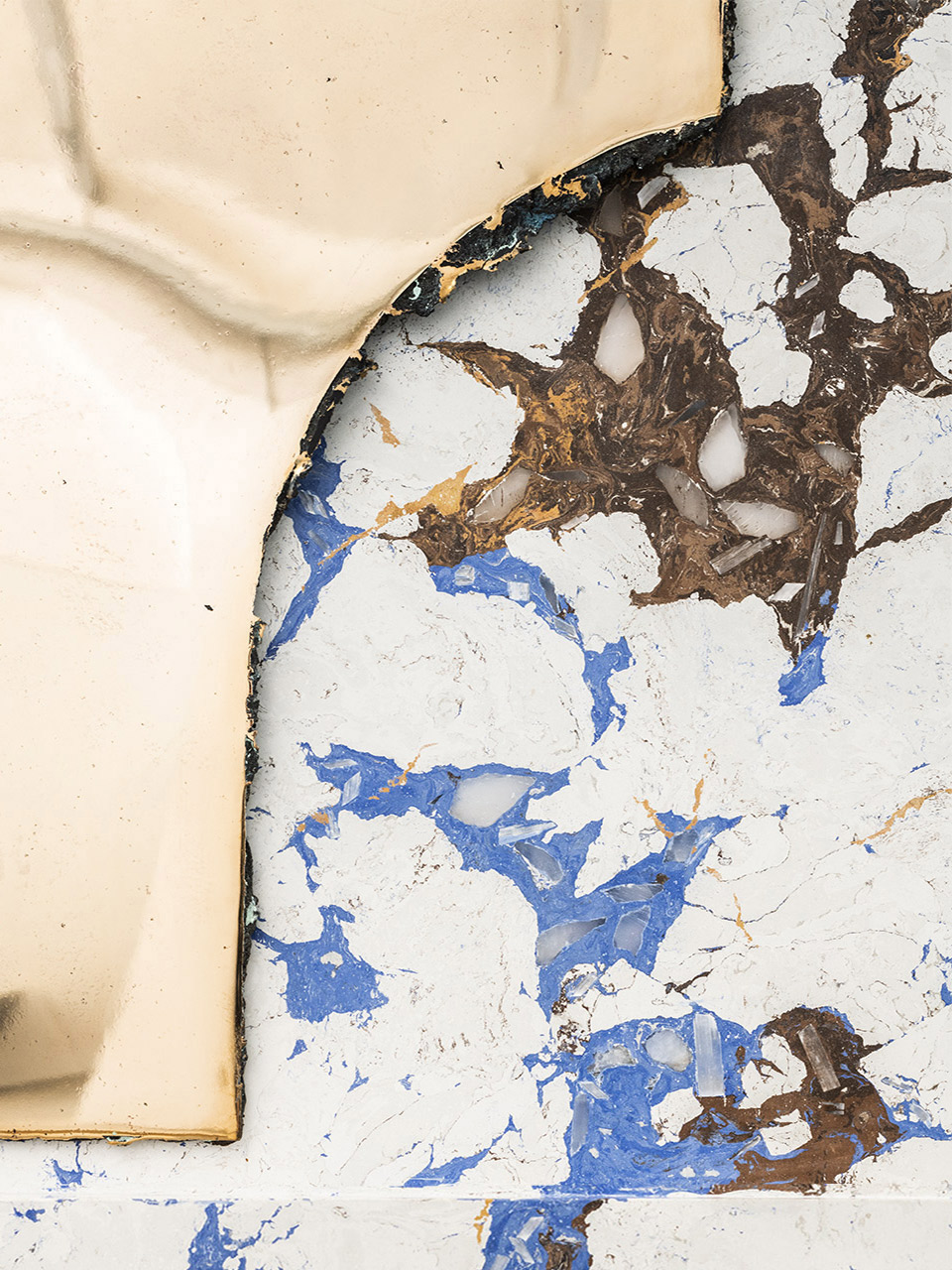
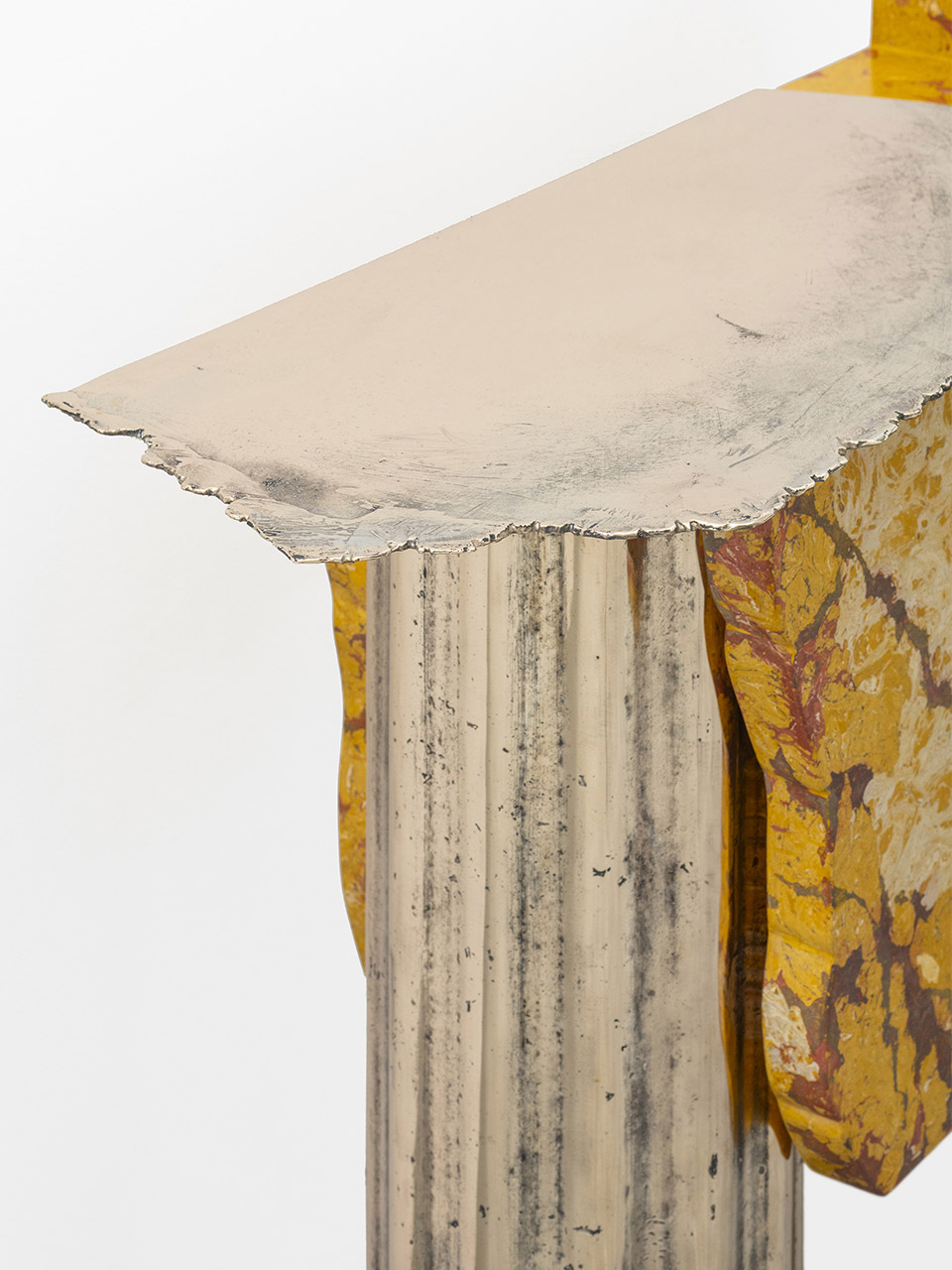
The result of this research-based and process-oriented work is a collection of contemporary ruins, freely deconstructed and reconstructed, imaginary simulacra, programmed artifices, which become functional to the post-archaeological message conveyed.
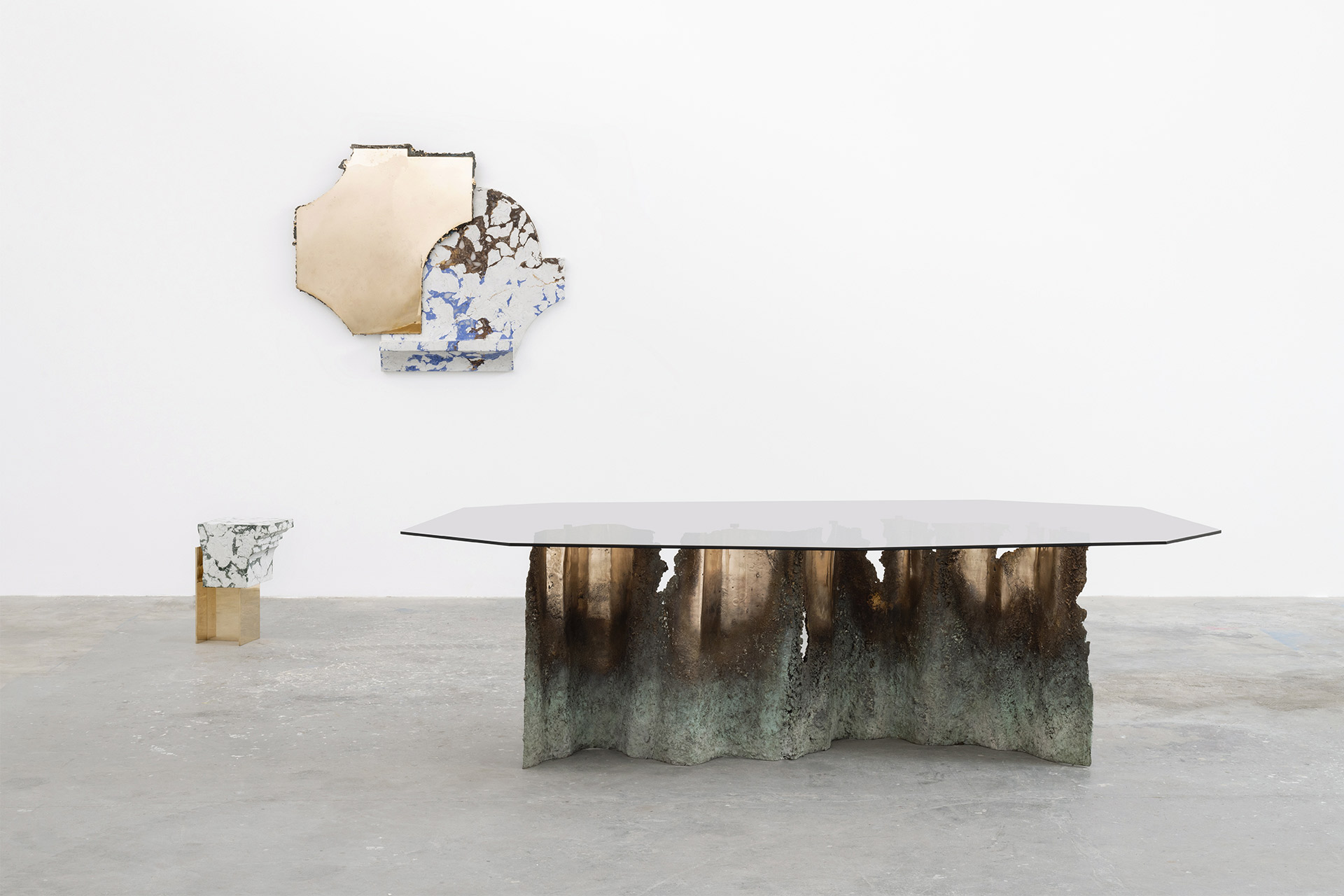
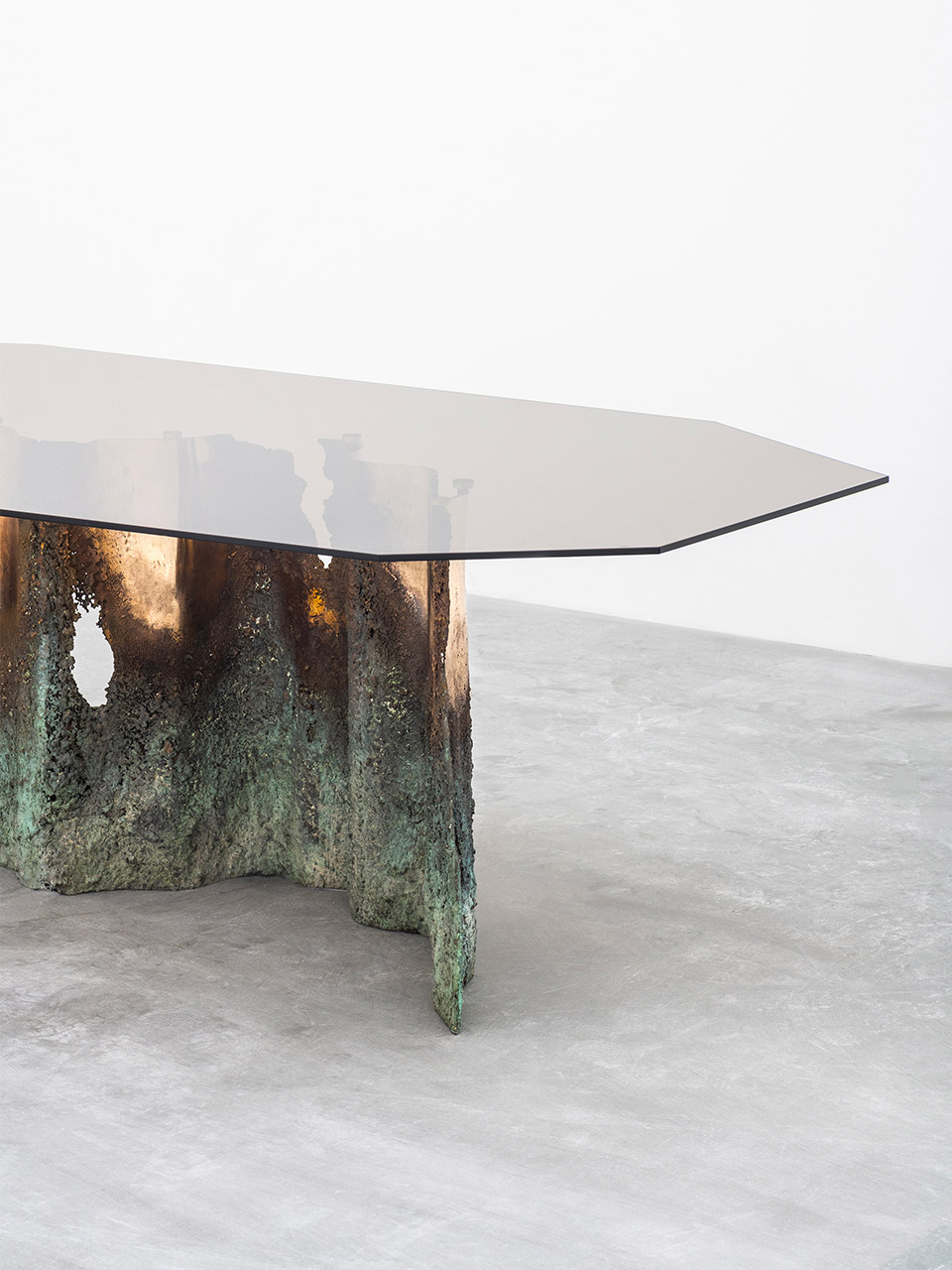
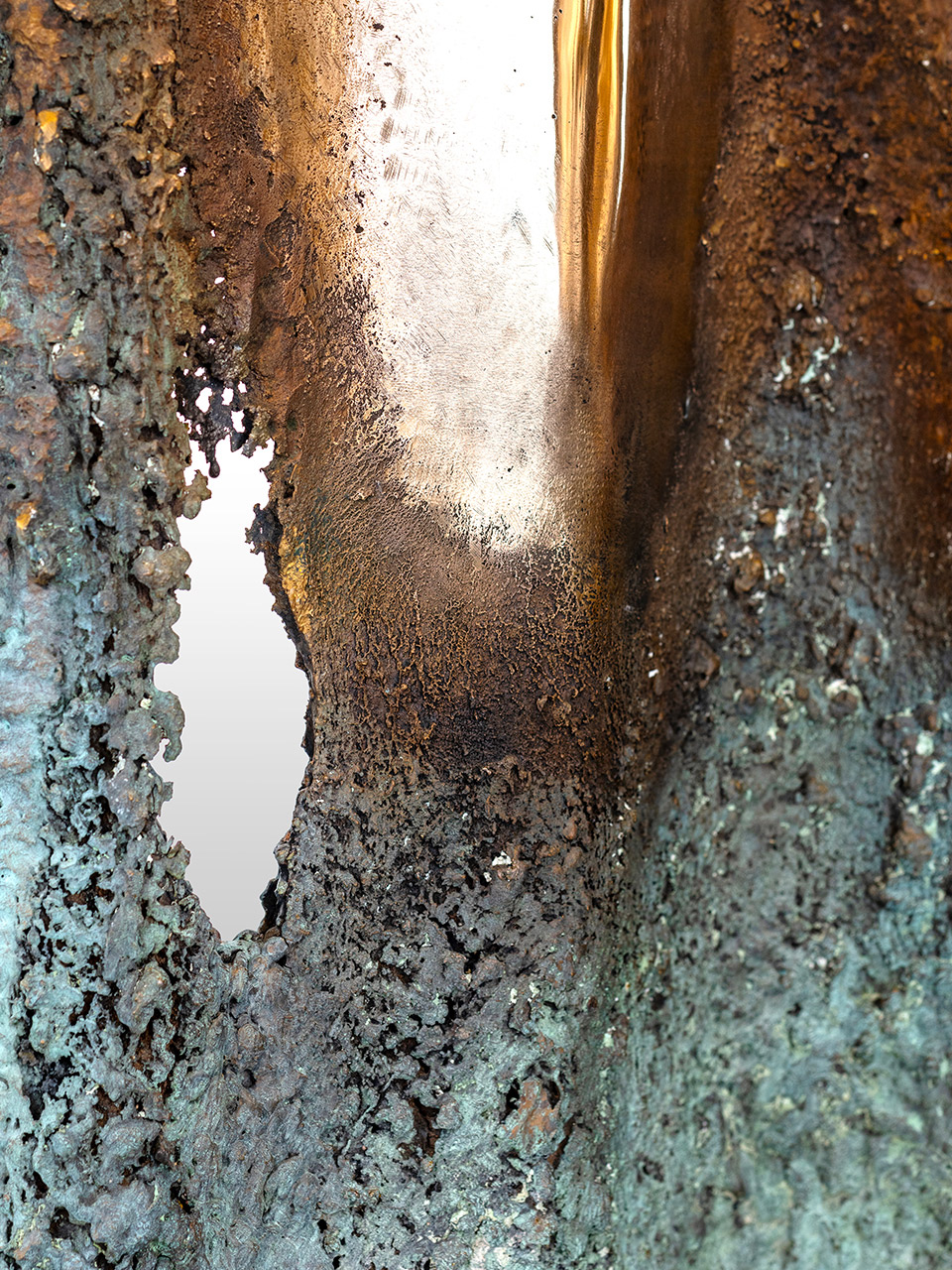
As the anthropologist Marc Augè wrote in “Le temps en ruines”:
“Their incompleteness contains a promise. The feeling of passing time […] a sense of time that is even more stimulating and exciting because it is irreducible to history, awareness of lack, expression of absence, pure desire”.
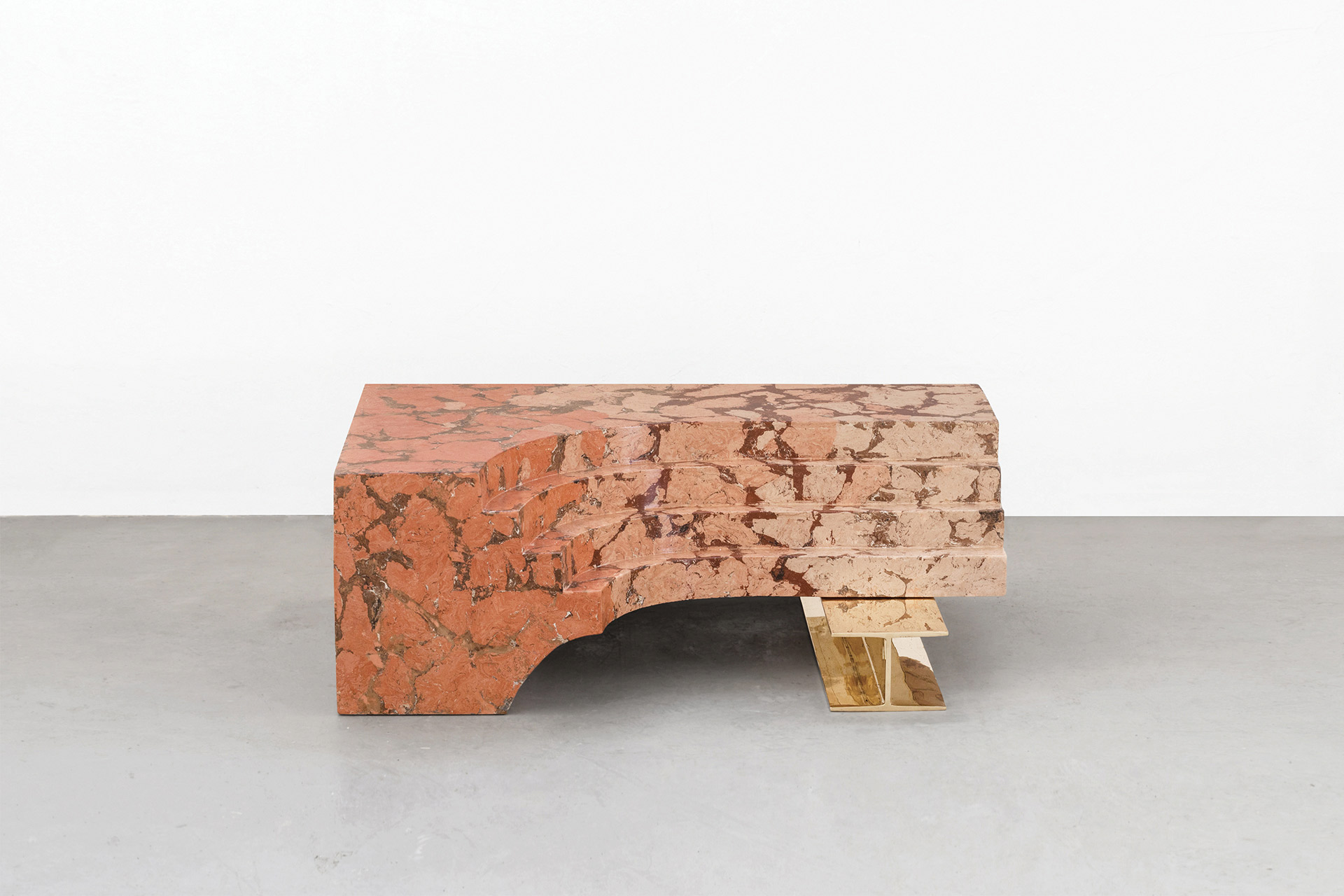
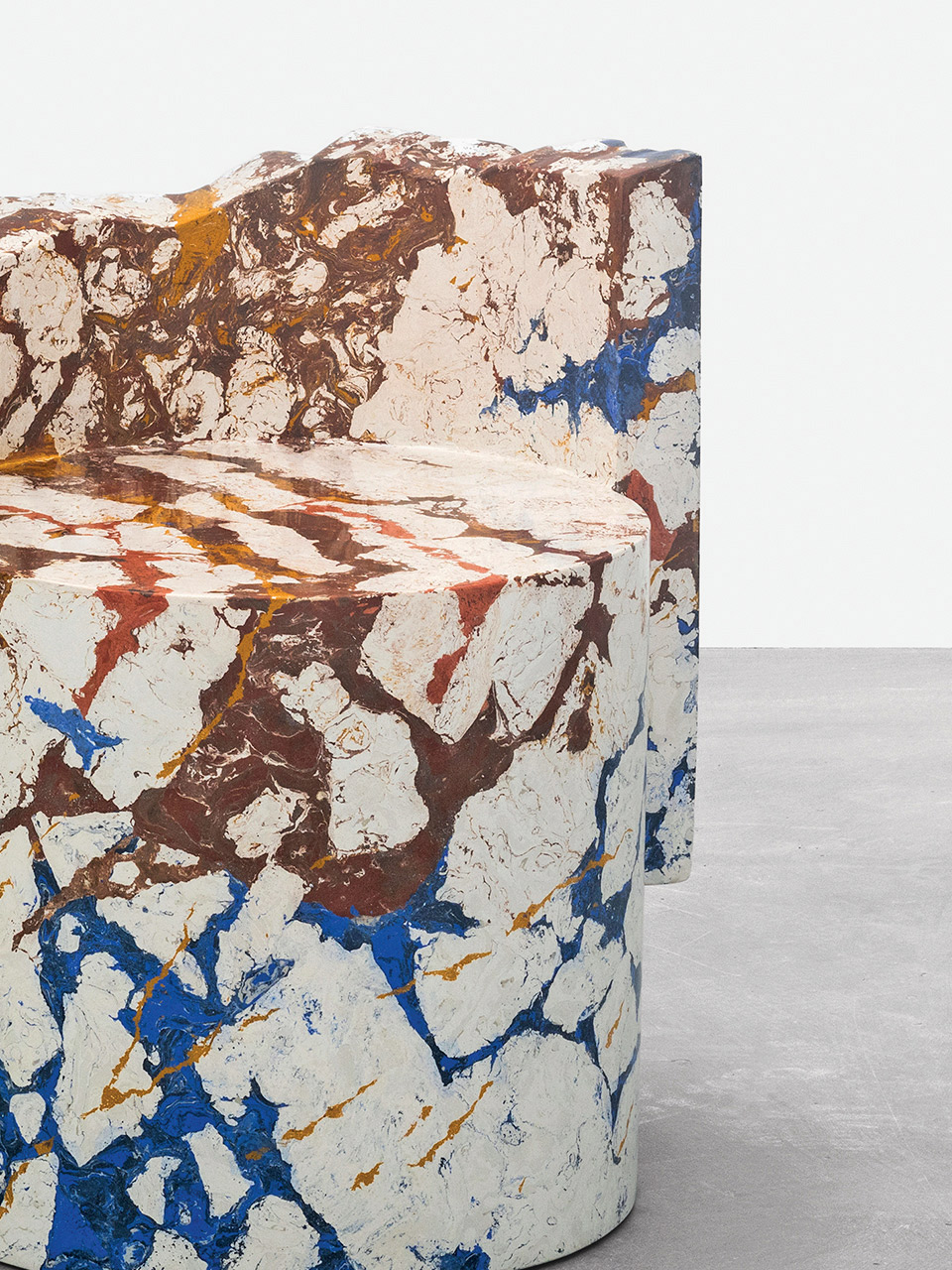
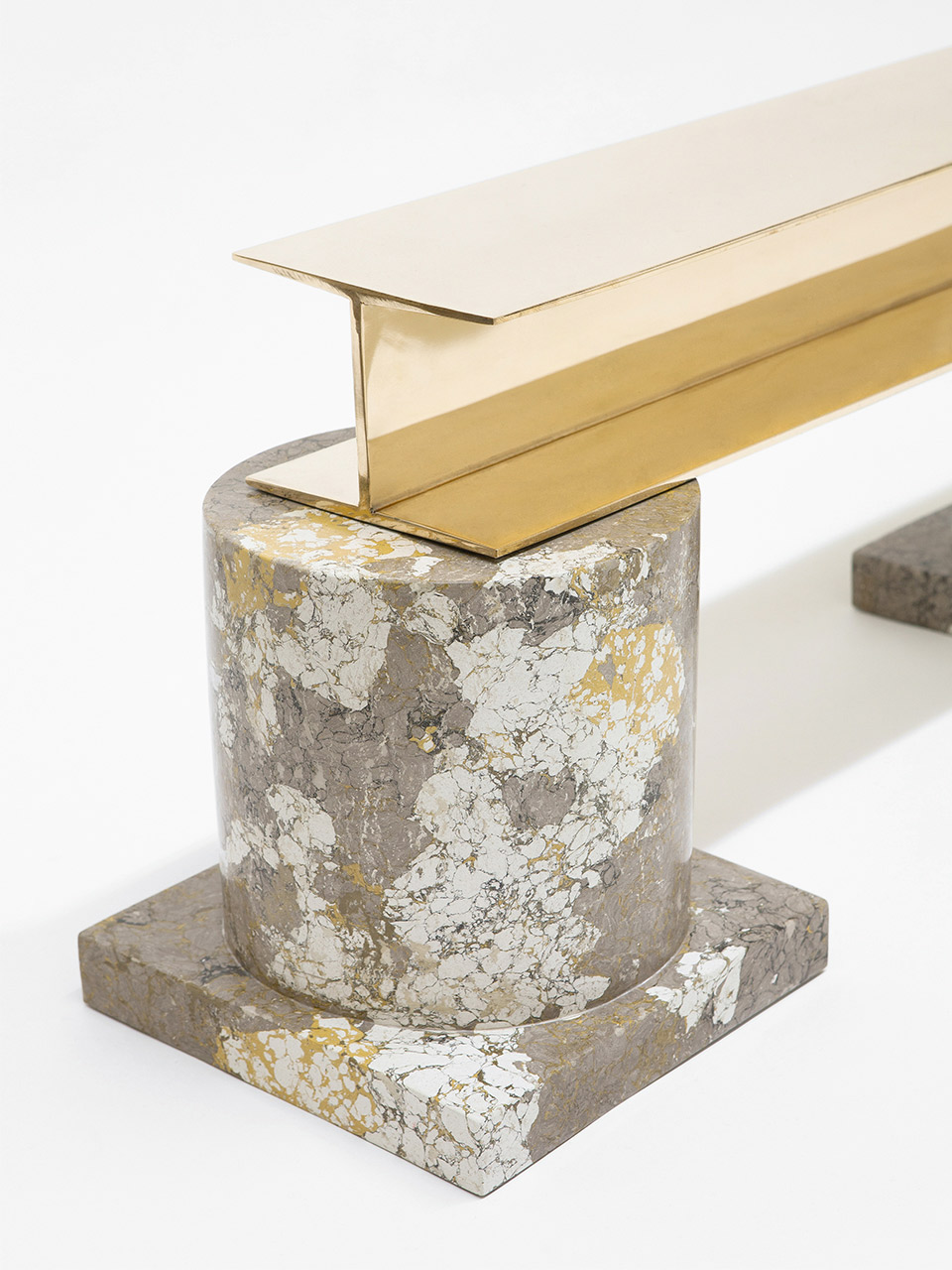
Winckelmann, Johann Joachim. Il bello nell'arte. La natura, gli antichi, la modernità. Einaudi, 2008
Warburg, Amy. Bilderatlas Mnemosyne. Independent Publishing Platform, 2017
Guidoni, Enrico. Architettura Primitiva. Electa, 1975
Marmi Antichi. De Luca Editori d’arte, 2016
Pullen, Henry William. Manuale dei marmi romani antichi. Gangemi Editore, 2016
Papapetros, Spryros. Pre/Architecture. Sternberg Press.
Augé, Marc. Le temps en ruines. Galilee, 2003
Gnoli, Raniero. Marmora Romana. La nave di Teseo, 2018
Alterazioni Video; Fosbury Architecture. Incompiuto. Nascita di uno stile. Humboldt Books, 2018
Dillon, Brian. Ruins (Documents of Contemporary Art). MIT Press/Whitechapel Gallery, 2011
Curated by Enrica, Ballarè. La via del marmo artificiale. Da Rima a Bucarest e in Romania tra Otto e Novecento. Zeisciu Centro Studi, 2010
Winckelmann, Johann Joachim. History of the Art of Antiquity. J Paul Getty Museum Pubns, 2006
Curated by Ficacci, Luigi. Piranesi. Catalogo completo delle Acqueforti. Taschen, 2016
Welcker, Gottlieb Friedrich; Muller, Karl Otfried; Leitch, John. Ancient Art and Its Remains; Or a Manual of the Archeology of Art. Palala Press, 2015
Hudson, Kenneth. Industrial Archaeology: An Introduction. Routledge, 2014
Bandinelli Bianchi, Ranuccio. Introduzione all'archeologia classica come storia dell'arte antica. Laterza, 2005
Trentin, Annalisa; Trombetti, Tommaso. Architettura e costruzione. La declinazione strutturale da Gustave Eiffel a OMA. Quodlibet, 2017
Devecka, Martin. Broken Cities: A Historical Sociology of Ruins. Johns Hopkins University Press, 2020
Dubin, Nina. Futures & Ruins: Eighteenth-Century Paris and the Art of Hubert Robert. J Paul Getty Museum Pubns, 2012
Stierlin, Anne; Stierlin, Henri. Greece: Classical Architecture. Taschen, 1997
Koolhaas, Rem. Junkspace. Quodlibet, 2006
Burriaud, Nicolas. L'exforma: Arte, ideologia e scarto. Postmedia Book, 2021
Barasch, Dan. Ruin and Redemption in Architecture. Phaidon, 2019
Calvino, Italo. Le città invisibili. Oscar Mondadori, 2016
Woodward, Christopher. In Ruins. Pantheon, 2002